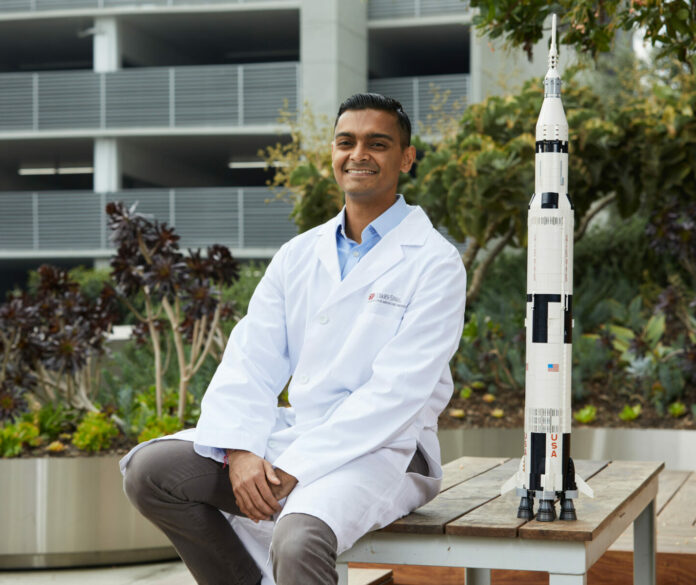Next month, a SpaceX rocket is set to carry an unusual payload to the International Space Station: a sample of stem cells to be cultivated as part of a Cedars-Sinai Medical Center research project to see if the cells can grow more rapidly and achieve better quality in space.
The mission is the first of a two-part stem cell production venture at the International Space Station for the team of researchers at Cedars-Sinai. It is the result of a $1.5 million grant from the National Aeronautics and Space Administration awarded two years ago. In March, NASA awarded a follow-on $2 million grant to the Cedars-Sinai team to continue and expand the research into stem cell production.
The stem cell program aboard the International Space Station represents Cedars-Sinai’s first-ever space research venture.
“Cedars-Sinai has already established a world-class biomanufacturing center here in Los Angeles, and now we want to leverage our specialized expertise to try to expand the production of stem cells in space,” said Clive Svendsen, executive director of the Cedars-Sinai Board of Governors Regenerative Medicine Institute and co-principal investigator on both missions.
The first mission, set to launch June 9 aboard a SpaceX Falcon 9 rocket at the Kennedy Space Station in Florida, is in partnership with Space Tango, a Lexington, Kentucky-based company that provides access to microgravity for research and development and manufacturing biomedical and technology products on the International Space Station. The aim is to fly an array of human induced pluripotent stem cells to the space station to see how they perform when cultivated in the station’s microgravity environment.
According to the announcement from Cedars, human iPSCs are a type of stem cell – created in the lab from a person’s blood or skin cells – that can make any cell in the body. Each body cell made this way carries the DNA of the individual. So iPSCs are ideal for creating and testing potential treatments that can be exactly tailored to the individual.
Stem cell researchers have become greatly interested in microgravity environments because of some unique properties it grants to biological tissues and processes that could help mass-produce cells in a way that is not possible on the earth’s surface.
“One of the major roadblocks in applying regenerative cell therapies on Earth is the lack of patient-specific cells capable of replacing damaged tissues and organs,” said co-principal investigator Arun Sharma, who leads a new laboratory affiliated with the Cedars Board of Governors Regenerative Medicine Institute, the Cedars Smidt Heart Institute and Department of Biomedical Sciences. “We are hoping to use the unique conditions of space to generate, expand and differentiate cells at a much larger scale than you can do on Earth.”
For the follow-on program that recently received NASA funding, Cedars-Sinai will partner with Houston-based Axiom Space Inc., which helps coordinate commercial (i.e.: not NASA-directed) teams aboard the International Space Station. No date has yet been set for this work.

